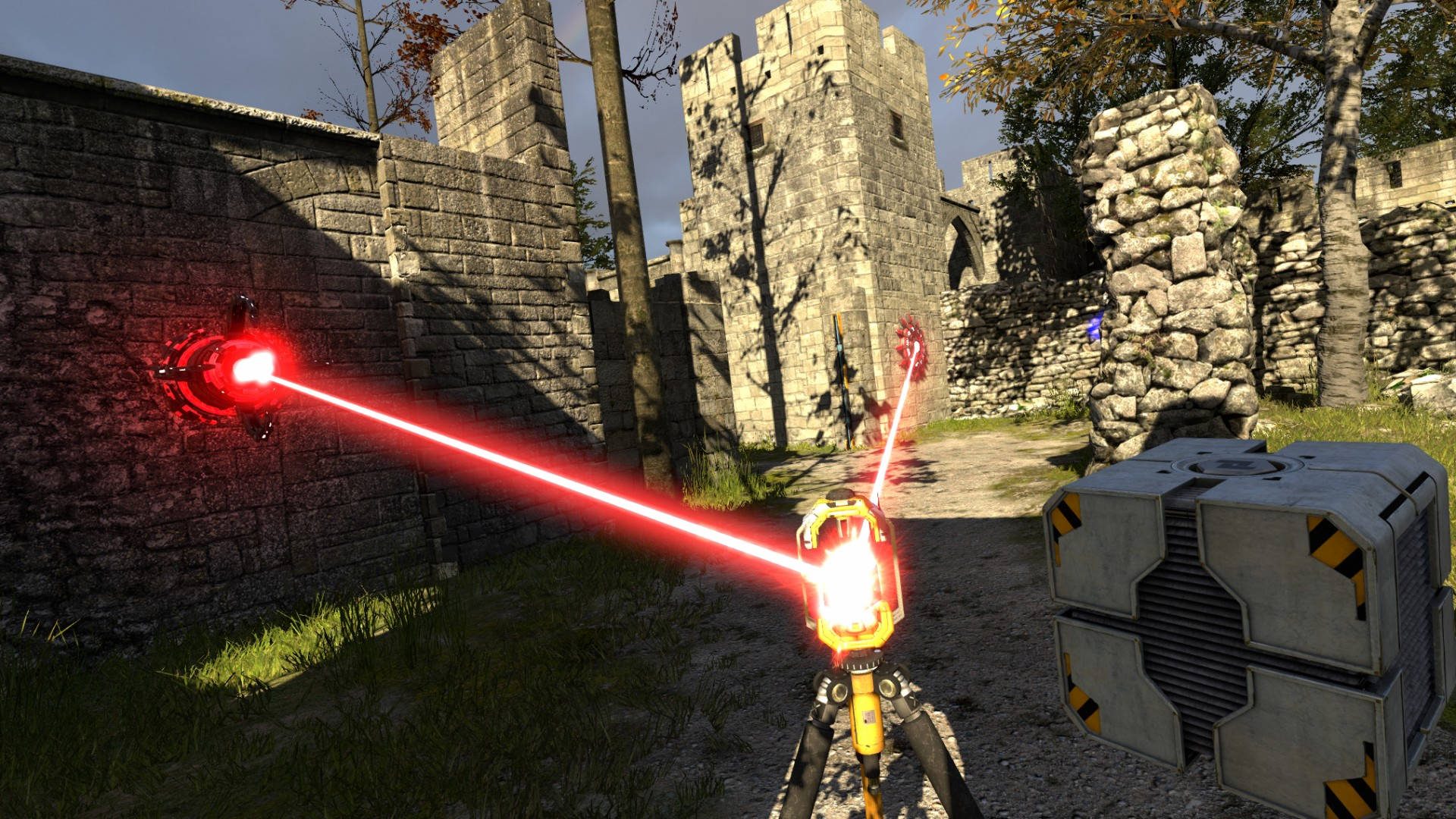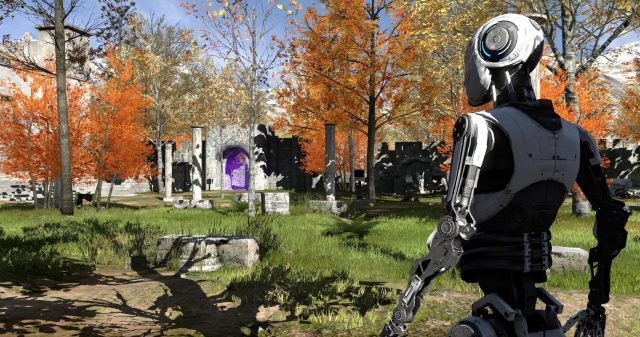The wildly popular puzzler The Talos Principle (2014) from Croteam is soon to be making its way to VR in a separate version, playable on SteamVR-compatible headsets; i.e. HTC Vive and Oculus Rift. Getting a chance to go head-first into Talos VR at this year’s Gamescom, I walked in asking myself if I actually wanted to spend the 20ish hours it takes to beat the game, in VR; and if given the choice between the two—the monitor and the VR version—that I would prefer to play in a headset instead of on a flatscreen. While my 20 minute demo didn’t exactly answer that question in full, a few things have certainly changed about how you interface with the game, making it a necessarily slower, but much more immersive experience to boot. And you know us, we like immersion.
The demo took me through the game’s third level (Land C), a verdant, castle-filled world where trees dot a medieval age ruin. While the puzzles and backdrop are entirely the same as the 2014 flatscreen title, I was told by Croteam’s PR and Community Manager Daniel Lucic, that some serious love went into getting the VR version just right, as it “almost took as long as [the original] Talos to make,” which Lucic qualified as a little over a year. In that time, presumably, the developers took everything they learned from Serious Sam VR (2017) and applied it to Talos, a game that first saw experimental, albeit imperfect VR support in 2015 on the Rift DK2.


Even then, Lucic tells me there’s still some work to be done to make the game more visually appealing to VR players, like adding ivy to help break up some more obvious repeating textures—something you might miss playing on a monitor, but a clear eyesore viewing from within a headset. As for scaling, what little I played looked indistinguishable from dedicated made-for-VR games, so no weirdly large or mismatched bits to speak of, but that may have more to do with the game’s general sparseness and already massive architecture.
With the addition of motion controllers, the world also become more interactive, with plenty of puzzle pieces to slot into blocky sigils, and beam reflectors or force field jammers at your disposal to make your way forward through each successive gate. Placing these just right, especially the reflectors, feels easier in VR than on the monitor version, if only because you can get a better line-of-sight so you can connect the beam source to the receptacle.
Unlike the monitor version, zooming around at high speed to get back to the puzzle’s beginning to retrieve a needed object isn’t really a great idea from a comfort standpoint, so the default walking speed is a bit slow to accommodate. This may irk some, but I found the surroundings so interesting, and well-suited to VR that I couldn’t help but stop and smell the digital roses. And yes, it’s just as pretty as you’d imagine it to be in VR, albeit some anti-aliasing issues with tree shadows that looked a little too sharp to be believable.
The game will feature a number of locomotion styles including instant and blink teleportation, ‘comfort mode’ snap-turn, and smooth-turning locomotion. This ultimately allows the player to interact with the game in any way they want, be it seated or in a standing, room-scale space.
There’s sill no official word on exactly when we’ll be seeing Talos VR hit Steam, but Lucic tells me that developers in Croteam are speculating on a late 2017 release.
We’re here at Gamescom all week, so check back for more coverage and hands-on articles with all of your favorite upcoming VR titles.

